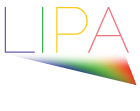LIP Adoption/Market Update Fall 2021
Introduction
SAN
FRANCISCO, CA. – October 30,
2021
The Laser Illuminated Projector Association (LIPA) reports that Laser
illuminated projection supported 1H21 business recovery for the Worldwide
Projector Market. This blog post/press release draws on inputs from major
market research firms and LIPA members to provide market highlights, segment
trends, observations, and future directions.
1H21 Market Highlights
The first half of 2021 was a watershed for Laser Illuminated projection. The first 2 quarters of CY 2021 saw positive Y/Y revenue growth for the first time since the end of 2018. For the first time ever, Laser illuminated projectors (LIPs) accounted for over 50% of projector revenue in 2Q21.
LIPs continue to take share in both high and now lower lumen categories, adding value in both. The Cinema installed base is now over 50% Laser with 2Q21 showing growth Y/Y for the first time since 4Q19. Cinema/PLF continues to trend toward 100% Laser penetration, both in terms of annual sales and total installed base.
Laser illumination continues to improve projection in terms of image quality, operational efficiency, reliability, and lifetime. Although Laser illumination is no longer being sold as a feature per se, the performance improvements Laser illumination enables are being optimized and leveraged in nearly all applications, lumen levels and resolutions.
LIPA continues to mark progress in its two key missions – to simplify and rationalize Laser Safety regulations and to promote the adoption of Laser illumination for projection and related applications.
Market Macros – Data and Trends
- LIPs (RGB, LaPh, LaP Hybrids) share of the Worldwide mainstream and high-end Projector Market (including Cinema but not Pico) topped 50% on a revenue basis and now is the dominant illumination technology
- Cinema revenues registered year over year growth in 2Q21 for the first time since 4Q19 (+51%) with most of the growth coming from LIPs
- The worldwide Cinema installed base is now majority laser at approximately 110,000 of 200,000 total screens (55%); Laser share in China is even higher.
- Cinema growth was led by Premium Large Format (PLF) and other high-end “entertainment venue” builds and upgrades
- At the same time, Lamp illuminated cinema projectors saw some opportunistic sales during the Pandemic, but this is likely to be short-lived given more recent trends
- LIPs generated over 50% of 2Q21 Y/Y revenue growth in mainstream/high-end segments with 1H21 Y/Y revenue growth of 27% to a total of $3.2 Billion indicating strong return from pandemic lows.
- 1H21 saw 5 brands sell more LIP units than lamp illuminated units; most of these having made a strategic commitment to Laser. The rest of the market continued to show a gradual transition to laser illumination
- The 1H21 China Laser Projection Market (excluding Cinema and Pico) grew 37% Y/Y on a unit basis vs 1H20 and a very strong 68% Y/Y on a revenue basis, to $960M (at 1$:6.45RMB)
Premium Large Format (PLF) and Cinema
- Theater re-openings and new builds/upgrades are finally driving the beginnings of Cinema recovery – nearly all are Laser
- Cinemark, the third largest US exhibitor, commits to conversion to all-laser; announces patron education program on benefits of LIPs for Cinemagoers
- IMAX and Barco commit to conversion of remaining 1000 lamp-based IMAX theaters to high performance LIPs which will result in an ~1800 screen all-Laser circuit
- DOLBY continues to promote it’s PLF format which showcases all the image quality enhancements enabled by Laser – high brightness, high dynamic range (HDR), wide color gamut (WCG) and high-performance 3D.
Application Drivers
- Premium Large Format (PLF) Laser Cinemas show near and long-term growth as exhibitors seek to offer unique and differentiated experiences
- LIP’s extended operating lifetimes (no lamp changes) are enabling permanent 24/7/365 Mapping installations not possible with Xenon lamps
- Highly optimized R/G/B + Phosphor Hybrids are driving cost down, performance up
- Evolution of RGB LIPs is enabling wider color gamut presentation for both cinema and non-cinema applications
- LIPs seem to be holding the line against wide deployment of LED walls in Cinema
- Competition from Ultra-Short Throw (UST) 4K resolution Laser illuminated projected TV against large FPD is growing rapidly in China and moving to other markets. This application is potentially huge, combines Laser performance and 4K resolution and is technically aligned with a massive ongoing content source.
- Worldwide UST 4K Laser TV volume doubled from 1H20 to 1H21. 99% of UST – 4K TVs sold were laser illuminated
Trends toward higher brightness supported by LIPs
- RGB laser illumination now enables record brightness levels of 75,000lm, surpassing even the brightest flagship Cinema systems
- Revenues by lumen level show strong growth ≥4000 lumen segments driven by higher performance levels and price points
- Worldwide, all categories ≥4000 lm grew on both unit and revenue bases
- In China, the ≥10Klm segments grew at 178% on a unit basis and are now 94% Laser
- Worldwide 96% of all 10K lm projectors are laser, up from 92% in 1H2020
Laser Adoption for lower lumen categories
- Despite a dominant trend toward higher LIP penetration of ≥ 5,000lm categories, LIPs are also increasing their share of 3,000 – 5,000lm models
- Availability of both smaller DLP® and 3LCD chips and lower cost Multi-Die-Package (MDP) Laser diode packaging enable laser illumination to “prove-in” for smaller, lower lumen models
Trends toward higher resolution
- The unique benefit of small etendue Laser light sources enable the use of much smaller chips/pixel formats
- The emergence of nearly 100% Laser-illuminated 4K Ultra-Short Throw (UST) TV market in China is starting to impact the rest of the world and the Projection market in general.
- The smaller étendue (source area x beam divergence) of Laser illumination enables the use of smaller DLP® or LCD chips for a given brightness level, further reducing projector cost and size, especially for >3,000lm segments
Trends toward longer operating lifetimes
- Improvements in power management and cooling systems are extending operating lifetimes to 40- 50,000 hours for some models
- Long operating run times enable use of projection in theme parks, museums, control rooms, multi-projector mapping and other applications where lamp changes are impractical, difficult or disrupt operations.
Regulatory Progress
- LIPA’s continued regulatory efforts achieved FDA/CDRH approval for reduced separation height (SH) for Non-Cinema Risk Group 3 projectors from 3 meter to 2.5 meters from the floor to the bottom of the output beam of the projector within the Hazard Distance (HD) where the beam is too bright for possible eye exposure. This allows the use high brightness projectors in applications where viewers are closer to the projector and/or where the beam is closer to the floor.
- IEC Regulation update – LAMP ILLUMINATED Projectors now must also conform to Risk Group Classification, putting them on equal footing with Laser illuminated projectors. New RG3 Lamp projectors will be subject to Hazard Distance (HD) and Separation Height (SH) limits just as LIPs are. [See: LIPA Regulatory Bulletin “Harmonizing Lamp- and Laser-illuminated Projector Regulations” at www.LIPAinfo.org for more details]
Acknowledgements and Disclaimer
LIPA would like to acknowledge and thank the following companies and LIPA members for their contributions of data and insights: PMA Research, OMDIA, Digital Cinema Report, Appotronics, Barco, Cinionic, Seiko-Epson and Texas Instruments. Data and statistics are drawn from multiple sources and represent the author’s best judgement in support of trends and conclusions presented.

